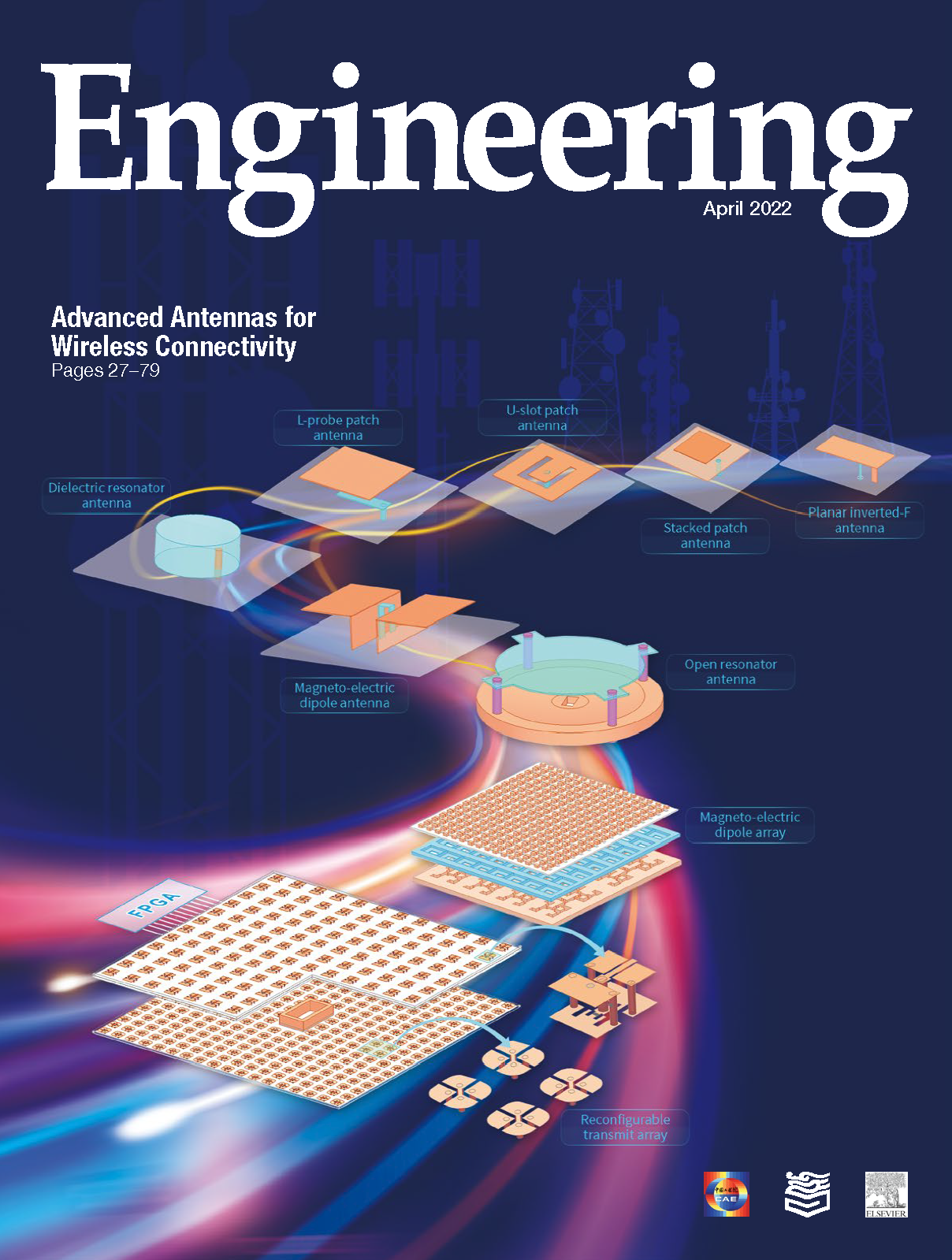
Antennas are critical components for wireless connectivity. In general, antennas with a wide bandwidth, compact size, and high efficiency are required in order to achieve a high level of system performance with modern wireless communication systems, sensor networks, radio astronomy, deep space probes, and so on. The importance of antennas is reflected by the numerous research articles that have been published on this topic in recent years—not only in antenna journals, but also in other related journals on sensors, vehicular technologies, microwave techniques, and terahertz techniques. The huge number of downloads for the papers published in major antenna journals also demonstrates the attractiveness of antenna research. Nevertheless, few special issues address advancements in antennas for readers from multiple disciplines. A centennial special issue titled ‘‘Antennas in Wireless Communications” in the Proceedings of the IEEE, the flagship journal of the Institute of Electrical and Electronics Engineers (IEEE), was successfully published in July 2012 and has helped significantly to promote the growth of fifth generation (5G) mobile communications, radio-frequency identification (RFID), biomedical imaging, and radar. It is now the appropriate time for another special issue on antennas that addresses a wider audience from multiple engineering disciplines in order to promote the advancement of exciting new wireless applications, such as sixth generation (6G) mobile, autonomous cars, the Internet of Things, wireless power transfer, unmanned aerial vehicles, and body-sensing networks. This special issue consists of four opinion articles, two reviews, and two research articles contributed by world-leading antenna experts from various countries. The content covers a wide range of activities in the area of antennas for wireless connectivity.
Advancements in wireless communications are mainly driven by the success in developing sophisticated smart phones. In the opinion article by Dr. Hangyang Wang, challenging issues in future antenna design for mobile terminals are overviewed, including the need for a small size, compact structure, low profile, light weight, and wideband and multiband performance, and a possible design technique based on the common mode and differential mode concept is promoted. Another important usage of antennas is in medical applications. In the opinion article by Prof. Koichi Ito, challenges in developing antenna performance evaluation techniques, antennas for electromagnetic therapy and diagnostics for cancer treatment, and human-centric antennas are addressed.
Antenna-in-package solutions are a packaging antenna technology for millimeter-wave communications and health-monitoring applications. In the opinion article by Prof. Yueping Zhang, the state of the art and development trend of this technology are described. Metamaterials are powerful means of controlling electromagnetic wave fronts at will. As a special case of metamaterials, metasurfaces are particularly attractive for antenna designs. In the opinion article by Prof. George V. Eleftheriades’s group, the huge opportunities in using Huygens’ metasurfaces for exploiting high-gain fixed-beam or beam-steerable antennas are demonstrated and explained. In particular, the Hugyens’ box antenna is shown to be a good alternative to phased arrays, as the number of active elements required is reduced dramatically. In the review by Prof. Yang Hao’s group, a comprehensive overview of antenna systems for wireless bioelectronic devices is provided, with emphasis on antenna designs related to biocompatible materials, packaging, fabrication methods, operating frequency, radiation characteristics, and wireless power transfer. In addition, antennas that are suitable for the diagnostics and therapeutics of various human organs are described.
To enhance the development of the Internet of Things associated with 5G and beyond communications, far-field wireless power transfer technology is of topical interest. In the review by Prof. Richard W. Ziolkowski’s group, an overview on miniature rectifying antennas (‘‘rectennas”) for wireless power transfer systems is presented, and the relative advantages of the series of Huygens’ rectennas developed by this group are discussed. In the research article by Prof. Raj Mittra’s group, available designs of low-profile, polarization-diverse, high-gain antennas with fixedbeams or scanned beams for millimeter-wave 5G applications are reviewed, and new designs of wide-angle scanning Luneburg-lens antenna arrays without the use of high-loss phase shifters are reported. Finally, a highly compact omni-directional dual-polarized antenna with synergetic electromagnetic and aerodynamic properties for high-speed low-windage onboard communications is disclosed in the research article by Prof. Zhenghe Feng’s group.
We hope that a general audience in the engineering discipline will find these papers interesting and helpful for appreciating the importance of antennas in modern technologies, and that electrical and electronic engineers can foster multidisciplinary research collaborations on modern antenna technologies. We are deeply grateful for the great help and generous support provided by the Executive Editor-in-Chief, Prof. Kwok Wa Leung, the guest associate editors, the reviewers, and the editorial staff of this special issue.













 京公网安备 11010502051620号
京公网安备 11010502051620号




